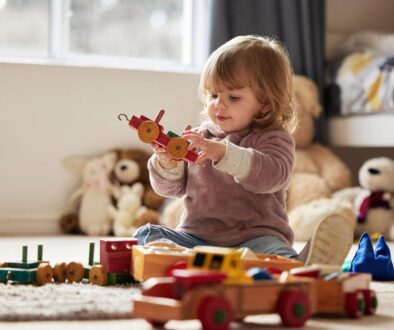Feeling Guilty About Setting Boundaries

Boundaries help keep children safe from physical, emotional, and mental harm. By establishing clear rules and consequences, children can understand what is expected of them and what behavior is acceptable. They help children learn responsibility and accountability. When they understand the limits and consequences of their actions, they can begin to take ownership of their behavior and make better choices. Boundaries help teach children to respect themselves and others. By setting limits on behavior, children learn to value themselves and their relationships with others. They also help children learn how to have healthy relationships with others. They learn to communicate their needs and expectations, respect other people’s boundaries, and negotiate conflict.
Setting boundaries with children isn’t wrong, it’s sometimes uncomfortable because children often protest limits. But children not liking limits does not mean they aren’t the right choice. For example- Children sometimes don’t want to eat healthy food or take a bath but we know it’s the right choice. A boundary is your way of passing on the values you want for your child.
A very important way to show your child love is to have clear, defined limitations and to remember to stay consistent with these limits.
Here are ways to establish clear boundaries for your child:
- Involve the kids in boundary setting– Children will be more invested if they share ownership of the rules. Allow them to have input and ask for their opinion on rules and consequences.
- Avoid labeling children as “good” and “bad”– We all behave in ways that are acceptable and unacceptable. Labeling a child “bad” can create a negative self-image.
- Recognize appropriate behavior—Most children’s behavior is strengthened or weakened by what happens after the behavior occurs. Positive responses involve communicating verbally and non-verbally with your child. Praise and reward your child when they follow the rules and meet your expectations. This will encourage them to continue to follow the boundaries you have set.
- Use age-appropriate language- Use language that is appropriate for your child’s age and development level. This will help them understand the boundaries and consequences better.
- Make use of “natural consequences” when possible- Positive consequences can make behavior more likely in the future. Negative consequences can make behavior less likely in the future. For example- If your child refuses to put on a coat, they may feel cold.
- Be trustworthy and a good role model- You are the one responsible for creating a safe environment for them. Be the person your child can count on. Children learn by example. Make sure you are modeling the behavior you expect from your child.
Setting boundaries with your child is an important part of parenting. By providing clear expectations and consequences, that are consistent, you can help your child develop into a responsible, respectful, and independent individual.





